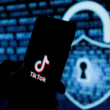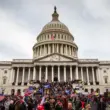In a letter to congressional committee leaders, the Southern Border Communities Coalition (SBCC) has revealed a shadow police unit unlawfully operating within the federal government, acting as a form of damage control.
The 14-page letter states that the United States Border Patrol is running an illegal operation unit called Border Patrol Critical Incident Teams (BPCIT). Its purpose is to “investigate incidents of agent-involved use of force, and they work to mitigate and conceal their culpability.” It claims BPCIT has” allowed border agents to get away with nearly everything, including murder.”
The SBCC is a network of organizations in California, Arizona, New Mexico, and Texas that penned a letter to several congressional committee chairpersons to sound the alarm on the alleged dangerous overreach and illegal operation of the BPCIT.
The letter was sent directly to Dick Durban, Jerry Nadler, Gary Peters, Bennie Thompson, and Carol Maloney, all in the democrat party. The SBCC has called upon these committee chairpersons to conduct investigations and oversight hearings immediately.
Congressional leaders also received a copy.
SBCC_letter_to_Congress_Final_10.27.21The SBCC claims that the BPCIT has been operating since 1987 under many different names and may be the largest and longest-standing shadow police unit in federal government operation today. They are not listed in Department of Homeland Security documents as official entities either.
The letter alleges: “BPCITs operate as shadow police units outside of federal law and without congressional authority. Their existence poses a threat to public safety by concealing agent misconduct, enabling abuse, and exacerbating impunity within the nation’s largest law enforcement agency, U.S. Customs and Border Protection (CBP). Immediate investigations into BPCITs are imperative.”
SBCC claims months of investigation went into the letter, including specific examples of evidence being severely tampered with.
“The case of Anastasio Hernández Rojas reveals the role that BPCITs play to corrupt investigations and obstruct justice.”
Rojas was detained by BPCIT, who claimed that he was defiant and deserving of the brutal beating they gave him that resulted in his death. It wasn’t until an eyewitness’ video evidence surfaced on national television that the truth was told — Rojas was handcuffed, face to the ground, and unable to fight. He looked like a sitting duck for the dozens of agents who harmed and ultimately killed him.
“The San Diego BPCIT (known there as CIIT) was the first to be notified by border agents. The BPCIT never notified SDPD, the agency with jurisdiction to conduct the criminal investigation. Instead, the BPCIT contacted the FBI and asked them to charge Anastasio with assault while he lay brain dead in the hospital. The FBI declined. SDPD only became aware of the incident through a media inquiry and located the scene of the incident on their own a day later, without help from the BPCIT or other border agent.”
Though not a complete list of transgressions, Rojas is just one example of the many victims of these situations.
U.S. Customs and Border Patrol doesn’t deny that it outsourced certain aspects of investigations to special teams.
The San Diego Union-Tribune reported that “a spokesperson with Customs and Border Protection who declined to be named on the record said that the agency has a ‘multi-tiered oversight framework in place to address allegations of misconduct involving agency personnel.’ ”
“The U.S. Border Patrol maintains teams with specialized evidence collection capabilities across the southwest border. These teams consist of highly trained personnel available to respond around the clock to collect and process evidence related to CBP enforcement activities as well as critical incidents.”
- West Point Reimposes Rules on Unvaxxed Cadets - January 31, 2023
- Warroom Host Claims Mother Jones Magazine Publishes Chinese Propaganda - January 31, 2023
- CCP Allegedly Weaponizing the DOJ - January 25, 2023










